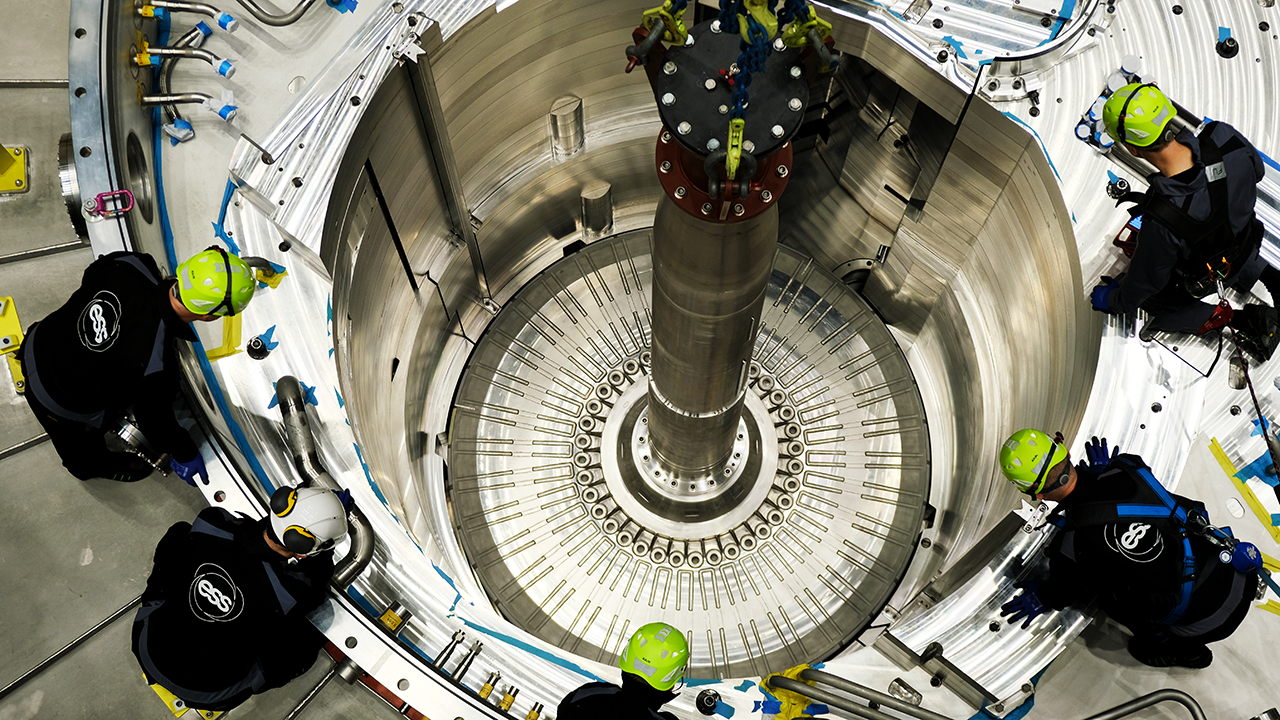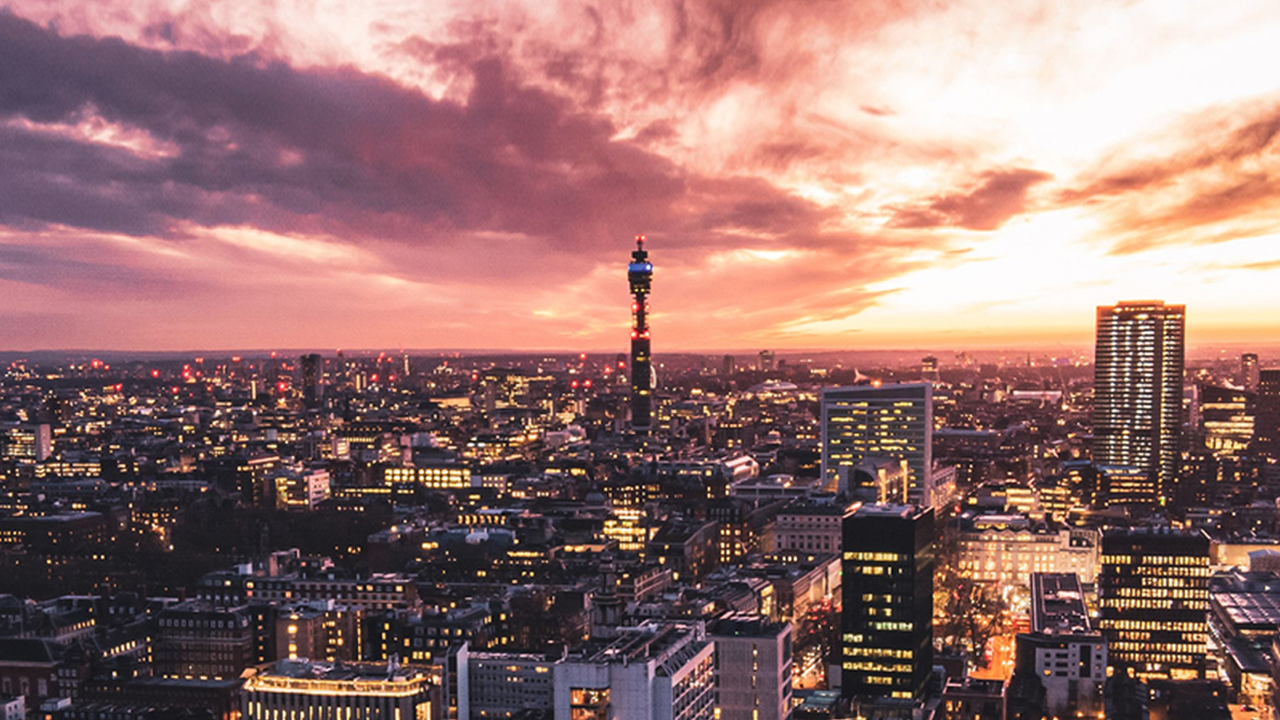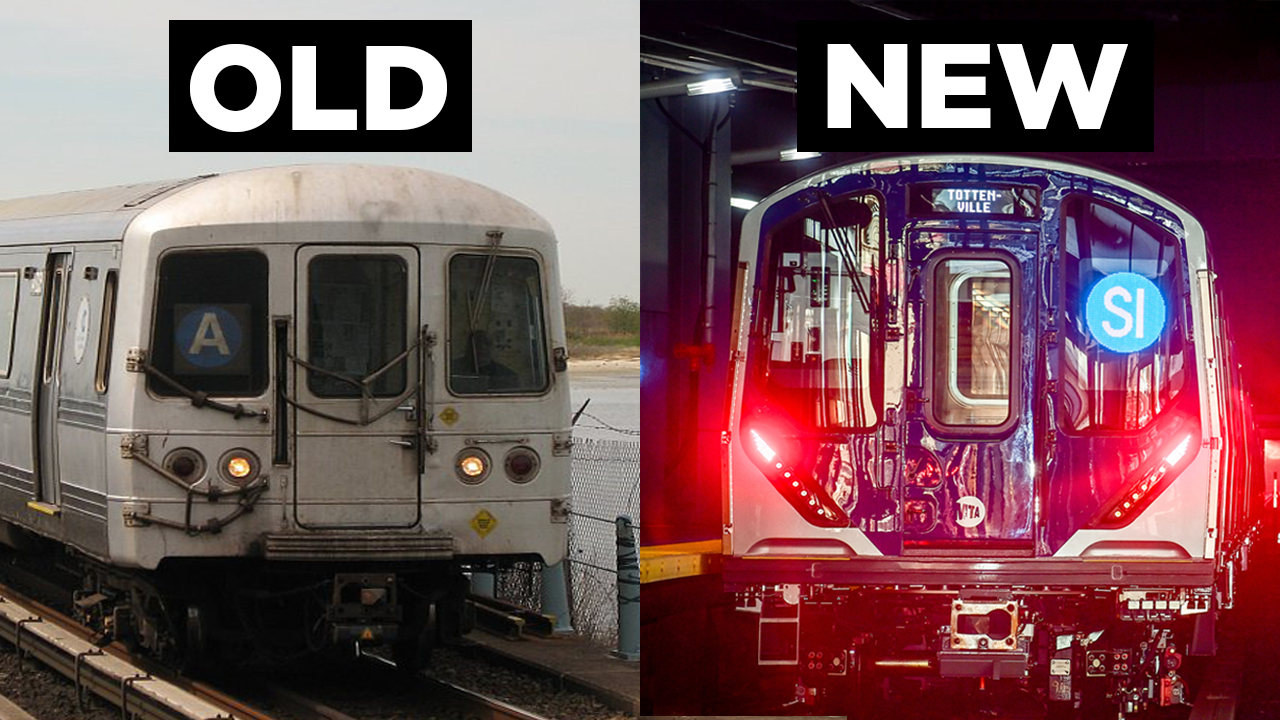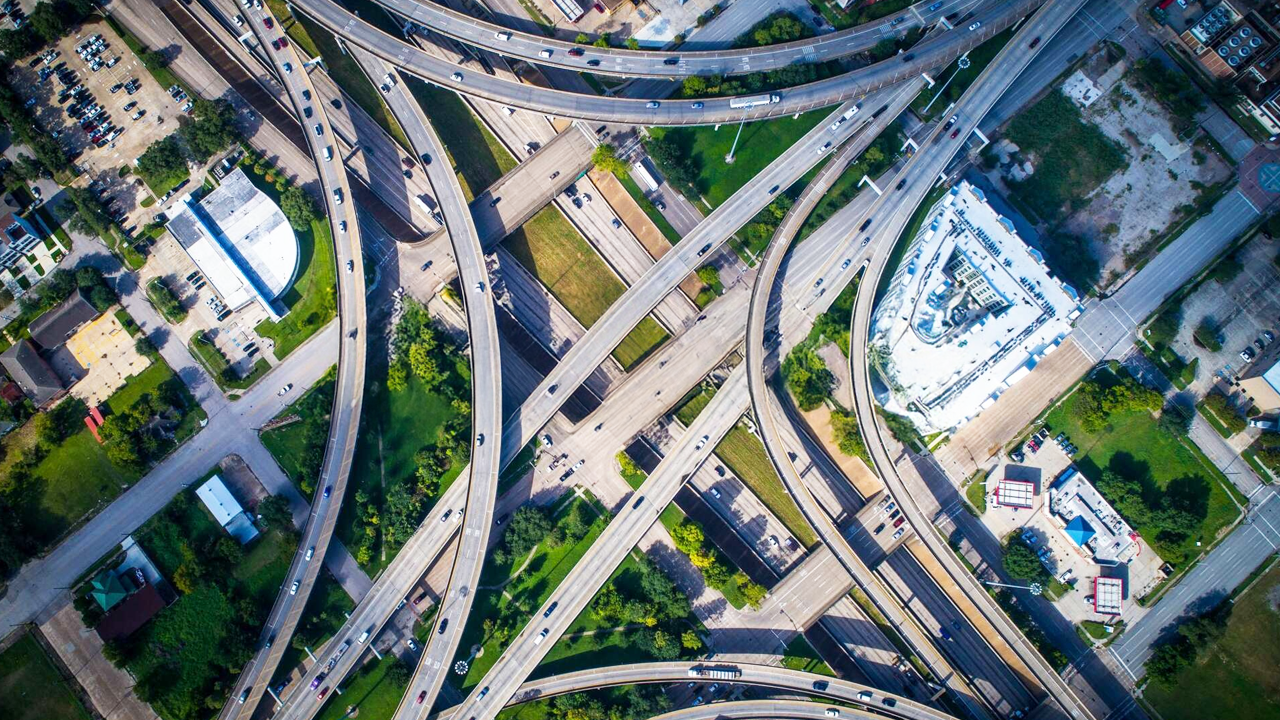The $1BN Race to Save Notre Dame From Collapse
- Youtube Views 1,187,746 VIDEO VIEWS
Video narrated and hosted by Fred Mills. This video contains paid promotion for Brilliant.
FIVE YEARS AGO one of the world’s most iconic buildings went up in flames.
The fire started at 6:30pm and was eventually brought under control by brave fire crews and first responders in the early hours of the following morning.
Notre Dame’s spire was completely destroyed, its roof had caved-in, and much of its interior was devastated. A cathedral that had stood for 850-years was left on the brink of collapse.
Then the extraordinary began to happen. Out of the ashes, some of construction’s most awe-inspiring teams defied the odds and worked to return this structure to its former glory: it’s a remarkable story of high pressure, serious risk and painstaking craftsmanship that borders on the miraculous.
The progress so far
Take a walk down to the Notre Dame site today and you’ll encounter a hive of activity. The cathedral is set to reopen to the public in December 2024, only just missing its Olympic deadline, but restoration works will run on until 2028.
Despite the pandemic, progress has been steady and scaffolding around the new spire was removed in March, revealing the breathtaking work of these construction teams.
This place defines Paris. Before the fire, Notre Dame welcomed more than 12M visitors every year, massively surpassing the Eiffel Tower’s 7M and the Louvre's 8M.
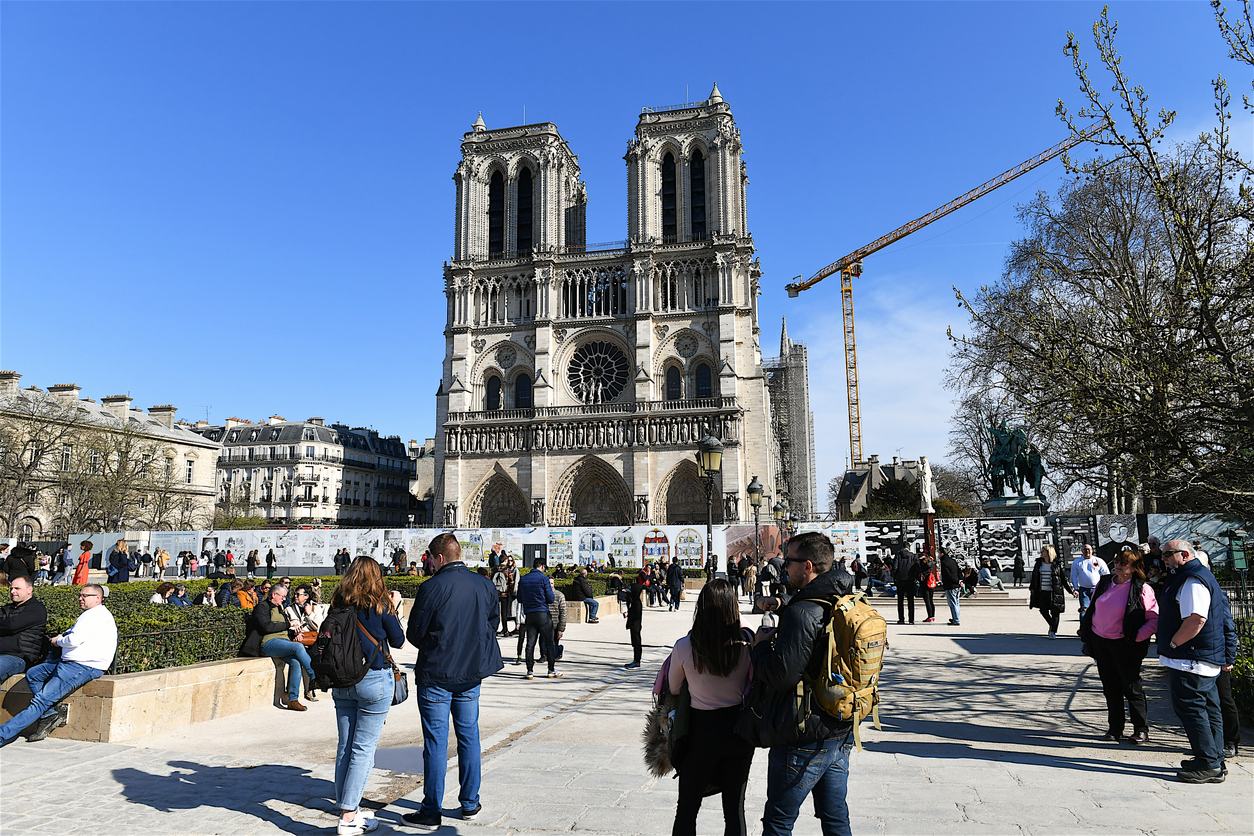
Above: Works are nearing completion on Notre Dame.
The cathedral towers above the city: a masterpiece of Gothic architecture and a UNESCO World Heritage Site.
But to really understand how it earned such reverence and why rebuilding it comes with such pressure: we need to give you a quick history lesson.
850 years of history
Notre Dame was first commissioned by King Louis VII. He wanted to create a symbol of Paris’s growing cultural and economic importance in the 12th century. The first brick was laid by Pope Alexander III in 1163 but it took another two centuries to complete the building.
Since then it’s been the site of numerous royal weddings, the consecration of Napoleon as emperor, and the beatification of Joan of Arc.
Now one of Notre Dame’s most remarkable feats of engineering are its flying buttresses. That’s these arches that you see here extending out the sides of the building, and they’re pretty important.
You see, during the 12th century architects were getting more ambitious. They were designing taller cathedrals with larger windows, allowing for incredible interiors flooded with natural light – exactly like the ones you see inside Notre Dame.
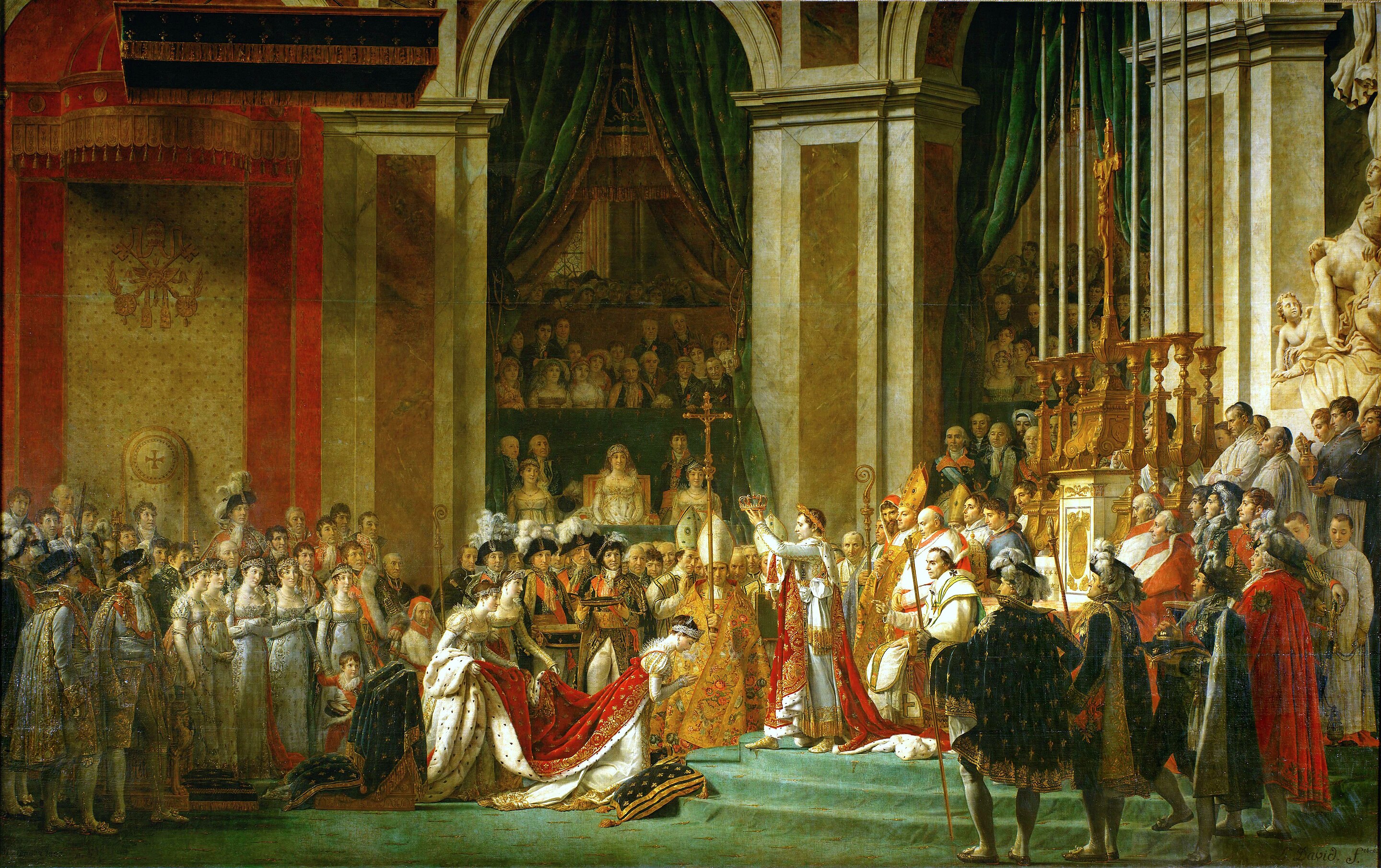
Above: The coronation of Napoleon.
But these taller structures meant larger, heavier walls that needed additional support.
And so the flying buttress was born. Mediaeval engineers connected the main walls to exterior columns with an angled beam, supported by an arch. These effectively provide extra support, holding the walls up from the outside and helping to redistribute the building’s weight down through additional structural elements.
These buttresses were built in the 13th century when they were still a relatively new concept, which makes them all the more impressive.
Unfortunately, the French Revolution saw much of the bronze, precious metals and lead stripped from the cathedral and by the 19th century the building had fallen into disrepair.
Catholicism was banned in Paris and Notre Dame was looted and vandalised, eventually becoming a rather grand warehouse to store wine.
And that was nearly it – Notre Dame had become an ancient relic that had been left to fall apart. A crumbling ruin.
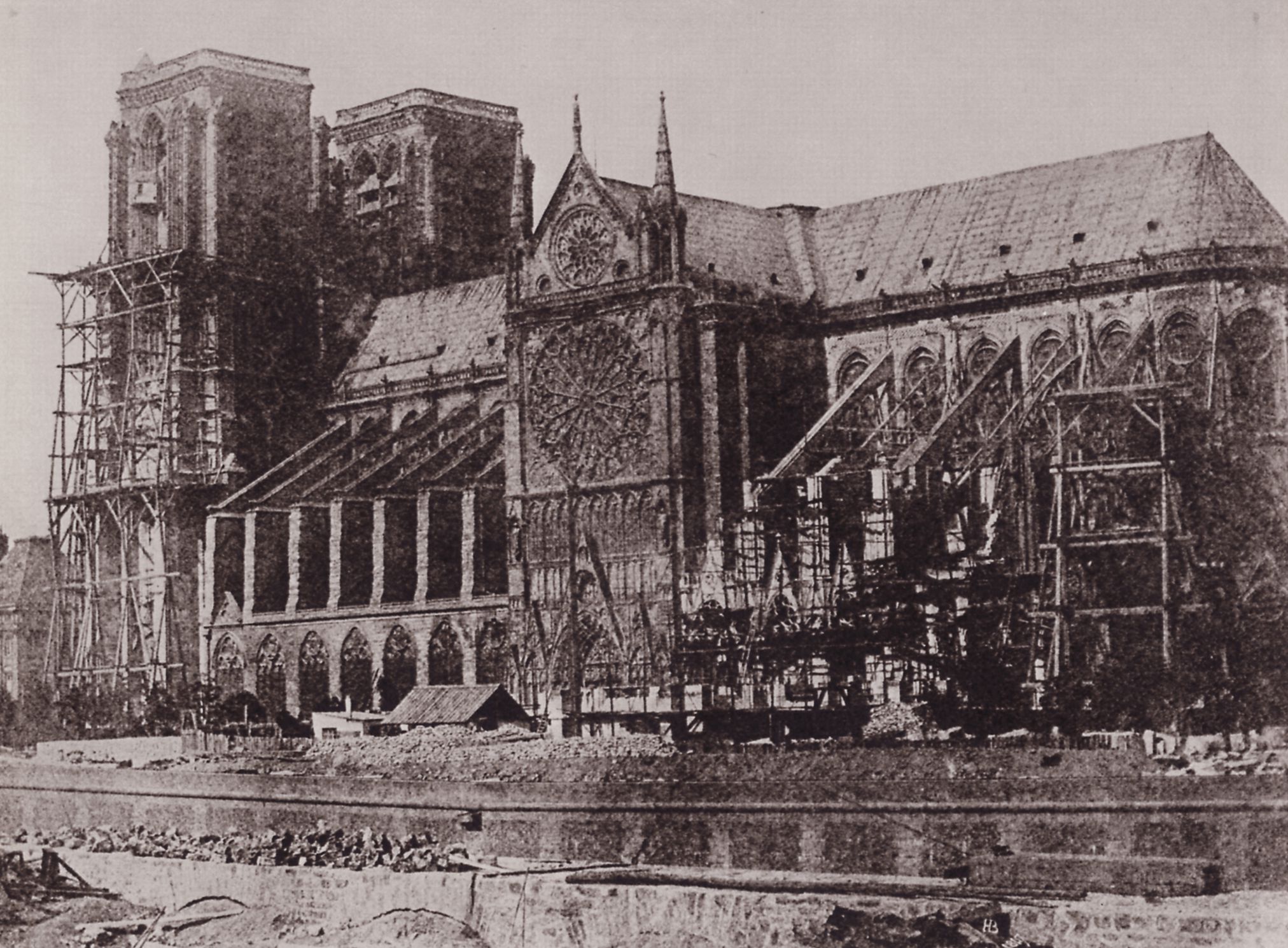
Above: The beginning of restoration works in 1847.
That was until Victor Hugo wrote a little novel that you’re all familiar with: the Hunchback of Notre Dame.
Hugo believed so intensely that the Notre Dame deserved to be saved that he made it the star of his 1831 story.
He dedicated a whole two chapters to describing the Gothic masterpiece, inspiring a new generation of Parisians to fall in love with the cathedral.
The Commission on Historical Monuments was formed and architect Eugène Viollet-le-Duc was brought on to rebuild the church. He replaced the spire that had been torn down with an even taller one. Notre Dame was an icon of Paris once more: its stoic witness to many centuries of history.
Then came 15 April 2019: a day that left the world stunned.
After the fire
People watched in agony as much of the great cathedral was devastated by fire. Its iconic spire lost to the ashes.
There was an outpouring of grief not just from the French, but right around the world.
In the wake of the disaster nearly USD $1BN was raised to repair the cathedral – and alongside the money and emotion, plenty of debate about what the rebuilt Notre Dame should look like.
Some proposed an even taller spire, in the spirit of Viollet-le-Duc. Others the world’s most unusual swimming pool or even a dramatic greenhouse.
It was a time that saw countless architects join the debate about how to recontextualise this building for the 21st century. Notre Dame looked like it would evolve once again at least for a moment.
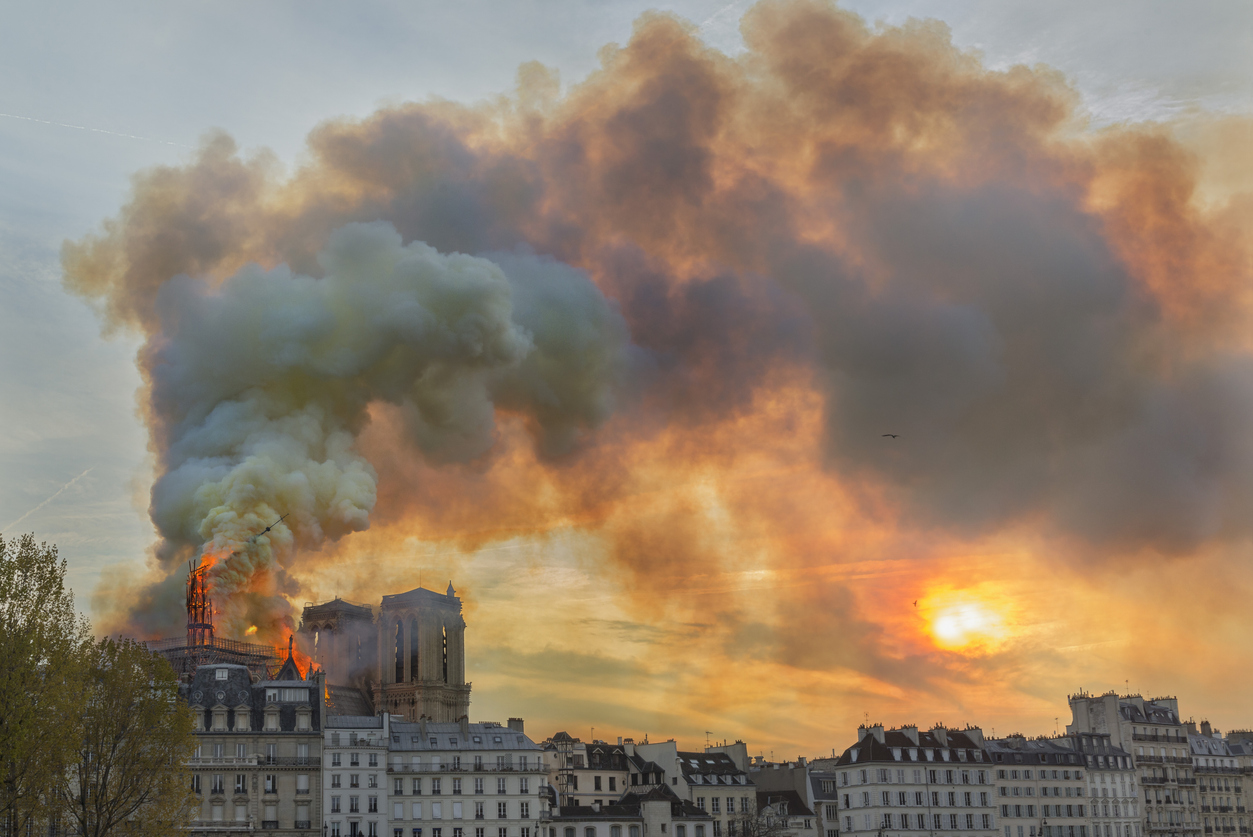
Above: The fire claimed the roof, the spire and much of the interior of Notre Dame. Below: Alternative designs for Notre Dame. Image courtesy of FUKAS.
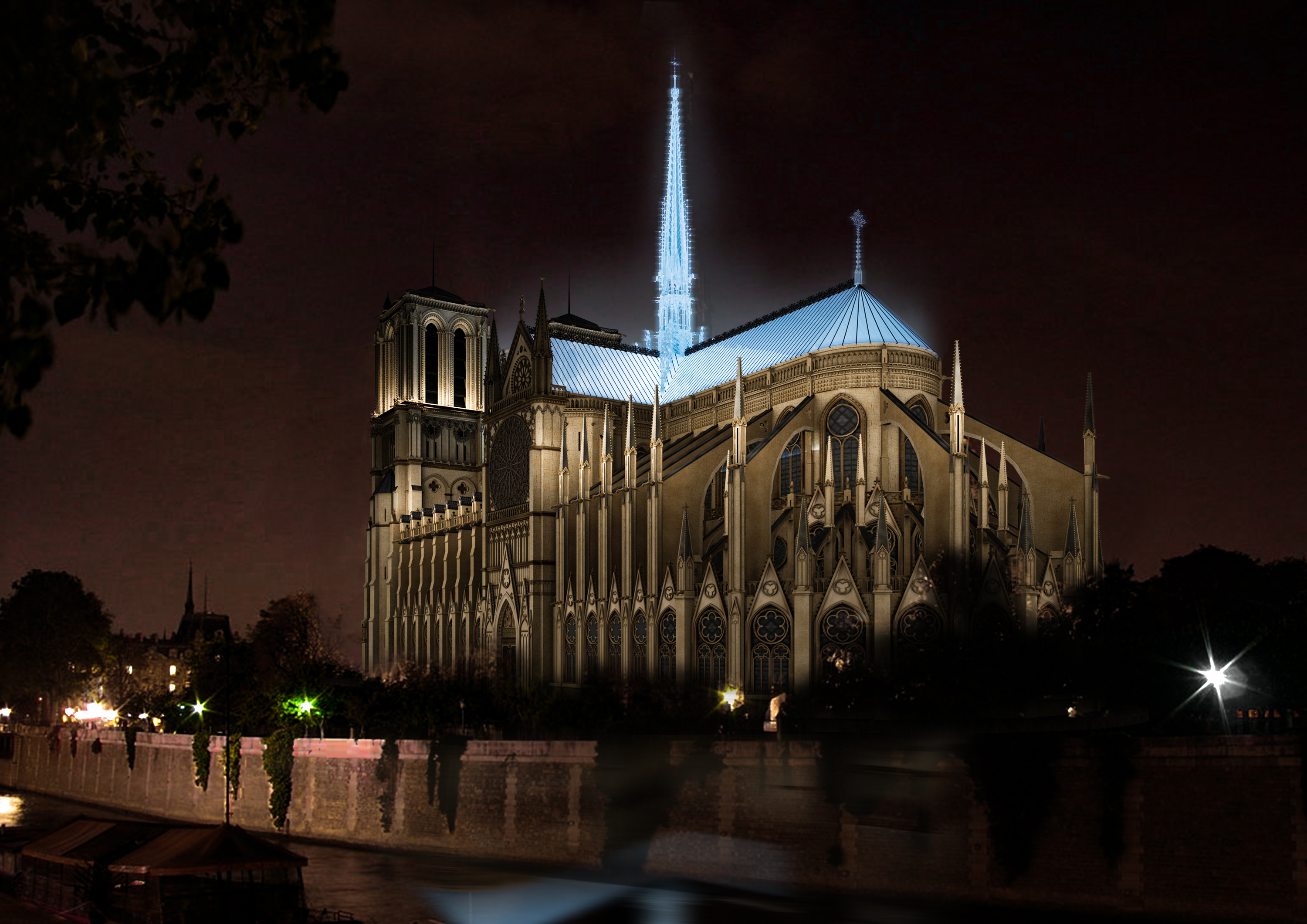
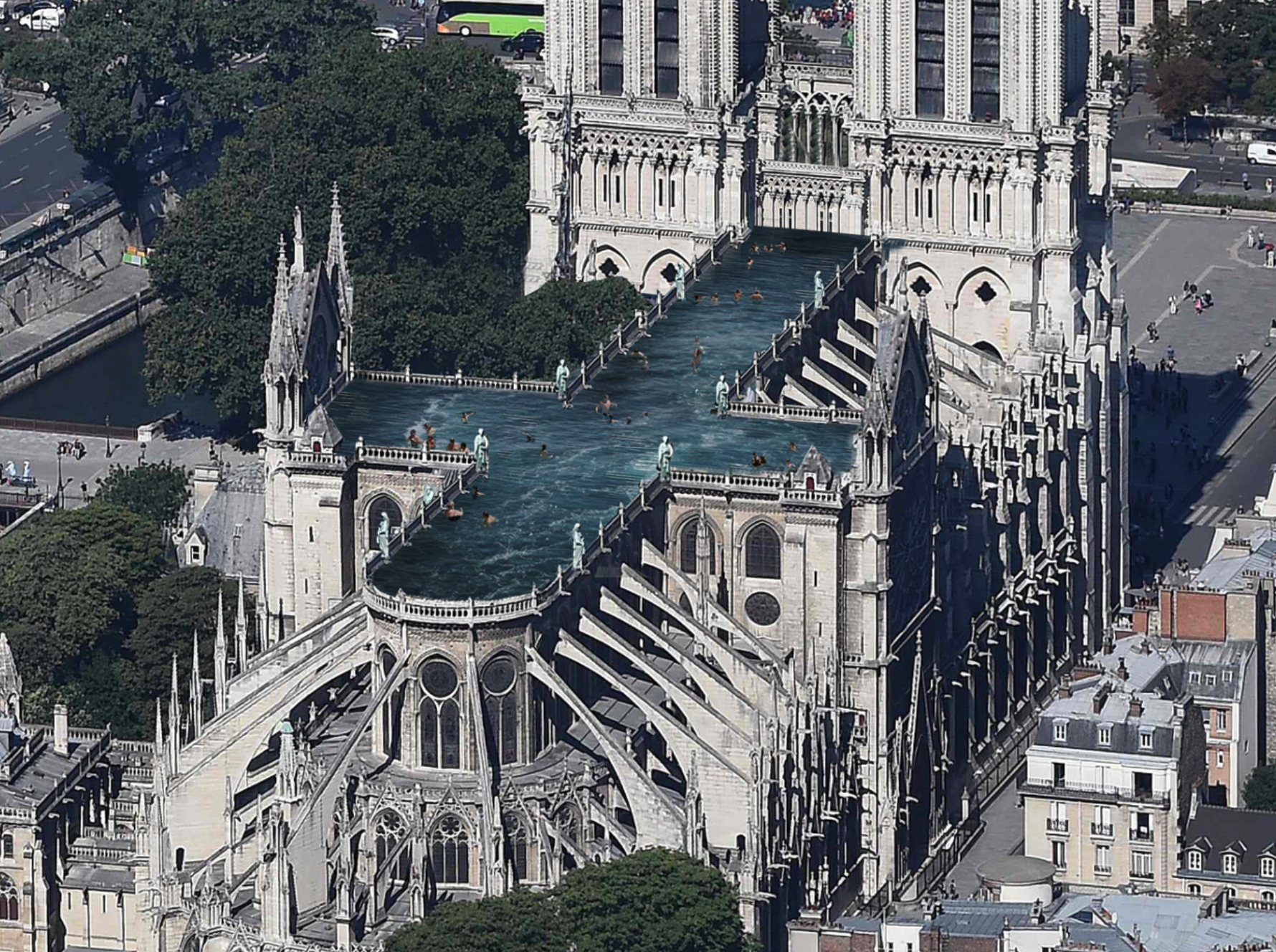
Above and Below: Proposed alternative designs Notre Dame also included a pool. Image courtesy of Mejergren Architects.
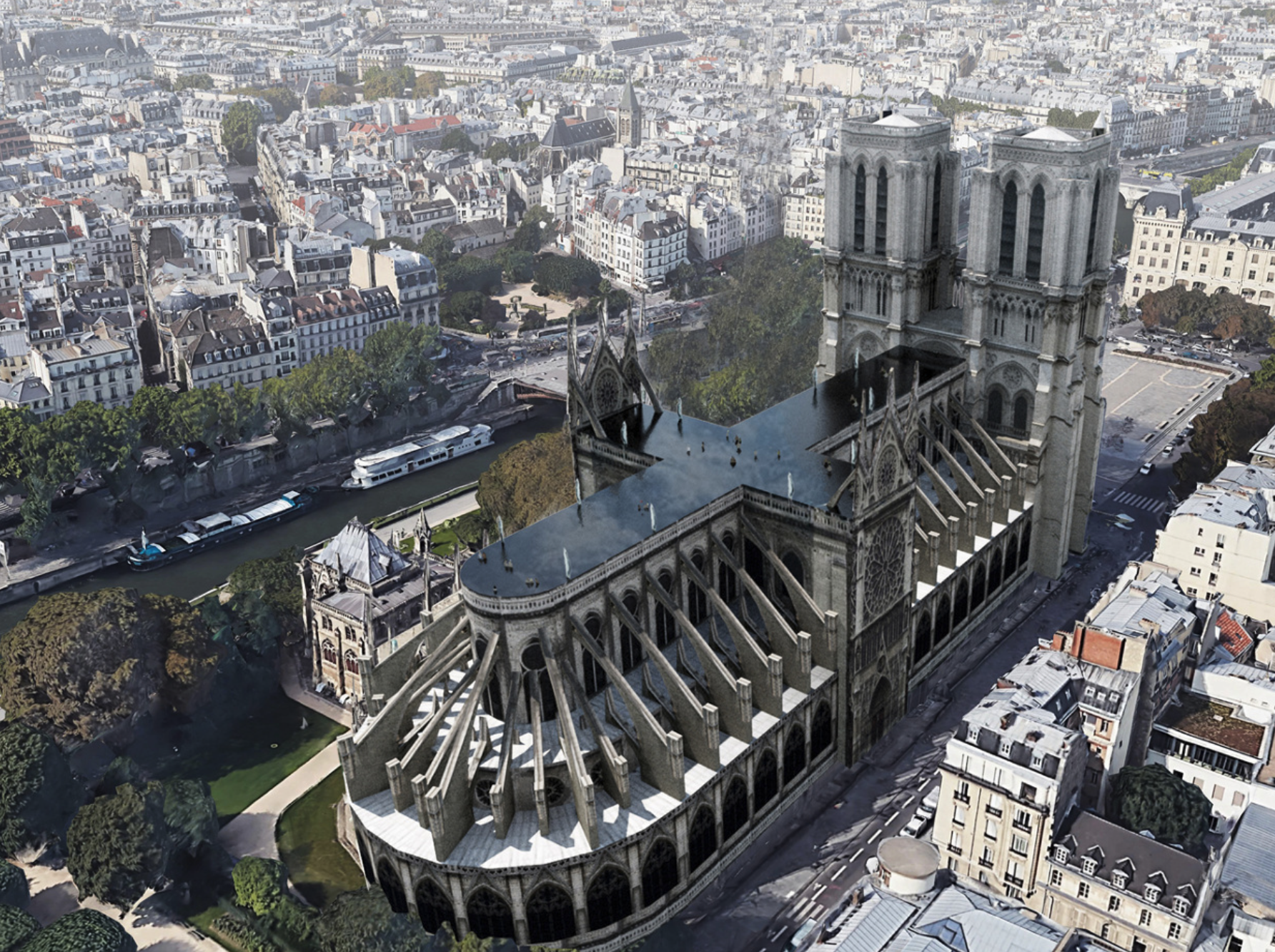
It took some time, but a consensus that the cathedral should be rebuilt as close as possible to how it was before eventually emerged from all the noise – a view that eventually prevailed.
But rebuilding an 850-year-old structure in the 2020s isn’t exactly easy. In fact, you’d be hard pushed to imagine a tougher construction project than this: teams here faced an unstable structure, that’s an icon of France, on an island in the middle of a congested city, with the eyes of the world on them and clock that was ticking down to the Paris 2024 Olympics.
There were challenges everywhere you looked. For one, you couldn’t use the same stones that the original building was made of because they came from quarries that no longer exist.
But we’re getting ahead of ourselves because before any of that, the building first had to be stabilised and made safe – that process alone took two years.
Stabilising Notre Dame
Those flying buttresses that were so revolutionary when they were first built and that gave Notre Dame its soaring Nave also left the church incredibly fragile in the aftermath of the fire.
If just one of them were to give way, the entire cathedral could collapse. Repairing them was a careful and painstaking process.
To ensure worker safety during this time, motion sensors were installed across the Notre Dame ruin. They would be triggered by strong winds or any movement on the ground and sound an alarm, warning people to evacuate.
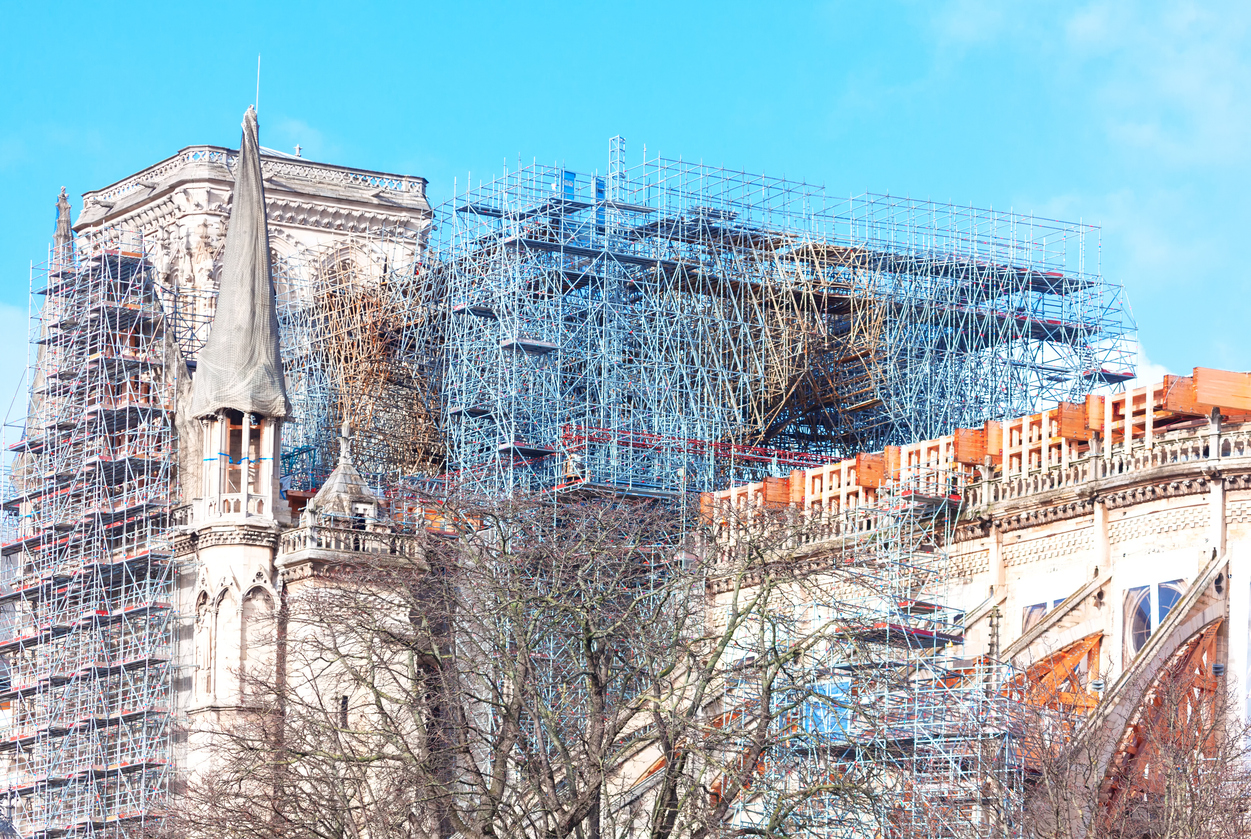
Above: Stabilising the structure took two years alone.
To hold the buttresses in place while they were strengthened and rebuilt, timber decking was placed underneath them. That decking alone had to be custom made for each of the 28 buttresses, catering to their 28 unique forms
Workers could then go inside the church and stabilise the walls from the inside using scaffolding.
To keep the rain out and create a safe, dry space to work, tarp was placed over the areas of roof that had burned away.
Removing the melted scaffolding
When the fire ignited, restoration works were already taking place at the cathedral and several layers of scaffolding surrounded the spire.
When the spire collapsed this scaffolding became twisted and melted: a tangled web of metal that weighed almost 200 tonnes on its own. With the church stabilised, that molten mess had to be removed.
Half of the melted scaffolding was some 90 metres high making access a complicated task.
Again, before work started, sensors were placed here to monitor for any sudden movements and keep workers safe.
A secondary, temporary, structure made of steel beams was then built across three levels above the melted scaffolding.
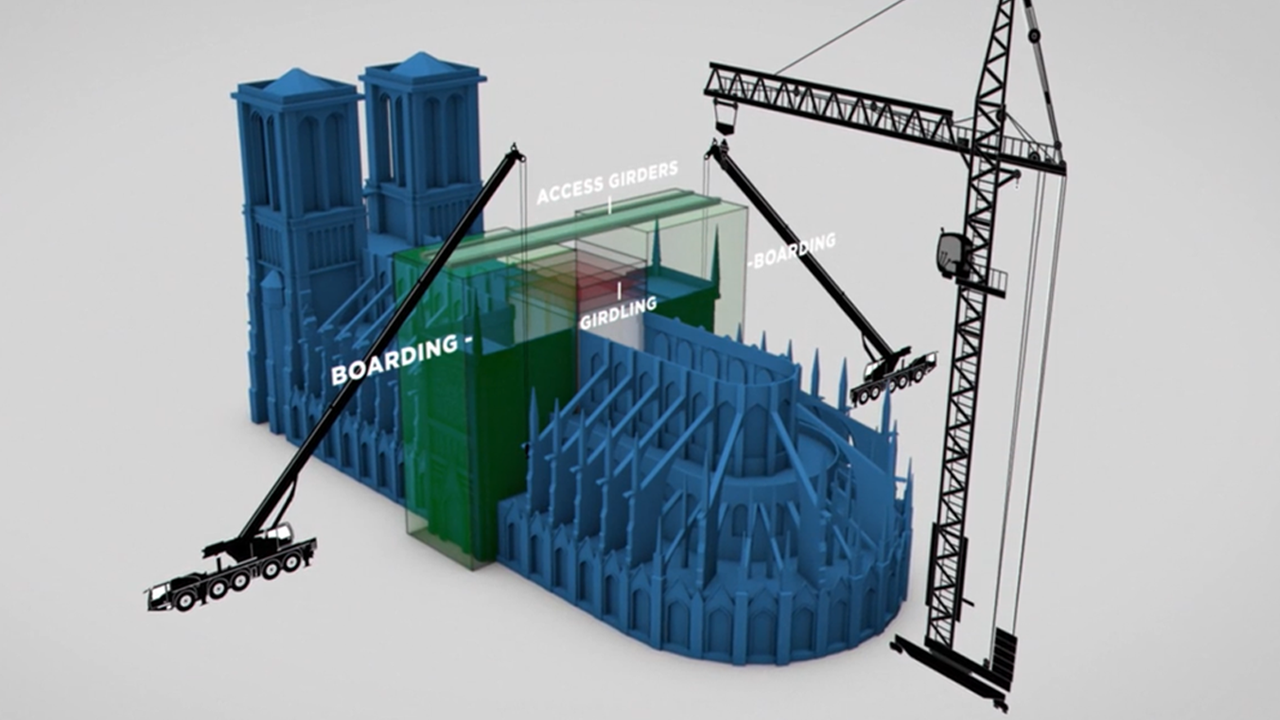
Above: The process of removing the scaffolding. Model by The B1M team.
Specially trained technicians would then abseil down using ropes, getting as close to the structure as they could.
They would then cut away and collect the melted pieces of metal.
Once that was done a crane would lift the rest away. Again, this had to be done extremely carefully as the crane couldn’t operate in strong winds.
With this complete, work on rebuilding the famous spire could finally begin.
Rebuilding the spire
The stool – the part of the building that the spire sits on – was built in Briey, a city in northeastern France.
Some 40 carpenters carefully selected oak for the 110 pieces of the stool jigsaw, perfectly matching it with that of the original spire. They then had to assemble it in their workshops to make sure every piece would fit before disassembling it and sending it onto Paris.
With the stool in place nearly the spire could then take shape above it, rising a height of nearly 100 metres.
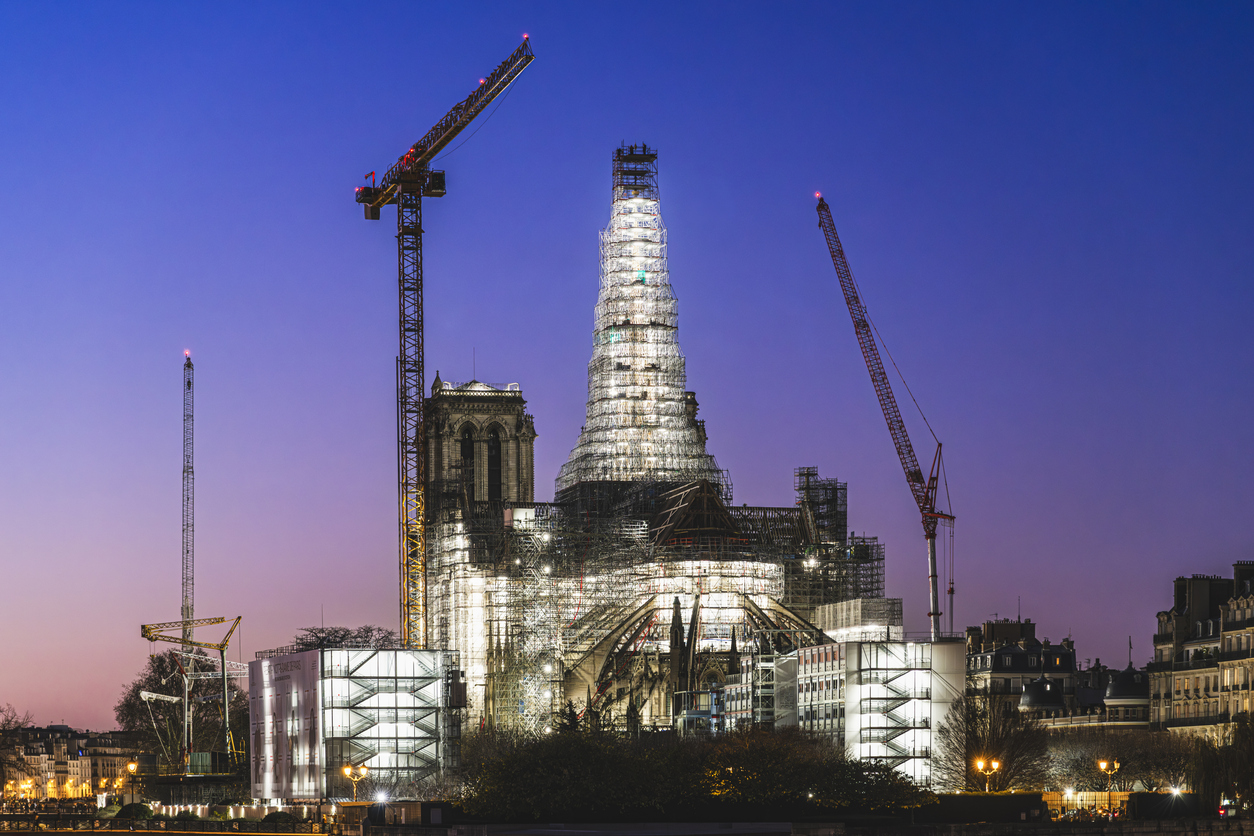
Above: The new spire rises to 100 metres.
Across the spire and the nave, nearly a thousand 200-year-old trees were selected from around French forests.
The new spire was crowned with a golden rooster, this time reimagined as a phoenix emerging from the ashes – it was intended to symbolise the church’s rebirth and was filled with the names of those who worked on the restoration.
The finishing touches
The church’s famous stained glass windows were also left badly damaged by the fire. They had to be cleaned and even replaced in some cases, and four of the windows ended up being donated from Germany’s Cologne Cathedral.
Notre Dame also contained France’s largest musical instrument – an 8,000 piece organ – when the fire started. It was left covered in a layer of lead dust and had to be taken apart, carefully cleaned, and reassembled.
But while much of the cathedral will appear identical, there will be some touches from the 21st century. Just one example of that is the new visitors centre built into what was an abandoned underground car park beneath the building.

Above: Notre Dame will soon be restored to its former glory.
The shocking Notre Dame fire is a potent reminder that no building is eternal and that our iconic structures depend on each generation of dedicated caretakers to keep them standing, gently guiding them on to the next chapter in history.
Thankfully, the church has actually now been saved as a digital copy, thanks to work by CNRS researchers. As works have progressed they have used laser scanners to create a complete 3D model of the building as a reference for future generations.
Two things have helped restore Notre Dame: the love of the French people and the extraordinary construction teams who have made miracles happen.
The same two forces that rebuilt this icon in 1844 after years of lying in disrepair, have now rebuilt it again in the 21st century.
This video and article contain paid promotion for Brilliant. To try everything Brilliant has to offer for free for a full 30 days, visit https://brilliant.org/TheB1M/ you’ll also get 20% off an annual premium subscription.
Video narrated and hosted by Fred Mills. Additional footage and images courtesy of FUKAS, BBC, the Dronalist, France24, Disney, Vincent Callebaut, Ulf Mejergren Architects and CBC News.
